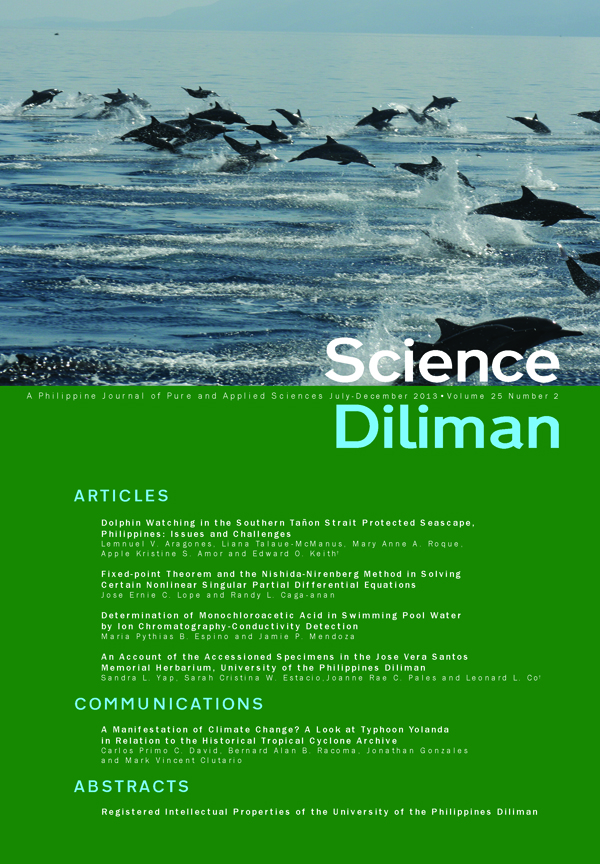A Manifestation of Climate Change? A Look at Typhoon Yolanda in Relation to the Historical Tropical Cyclone Archive
Abstract
The IBTRACS world database of tropical cyclone(TC) tracks was analysed to determine potential historical trends in TC characteristics for the west Pacif ic basin. Trends are then related to the characteristics of Typhoon Yolanda to see if this individual event constitutes as a data outlier or is part of a trend that can be related to climate change. In terms of TC frequency, it is deduced that there is a decreasing pattern in tropical cyclone formation starting in 1970. It is also noted that while there is no trend observed in the annual mean maximum wind speed, a decrease in the number of high wind speed TCs is measured for the months of November and December. The location of TC formation has also been changing towards a higher latitude but closer to the Philippines in terms of longitude. Lastly, typhoons making landfall in the Visayas and Mindanao region have also become slightly more frequent in the last decade. Except for the last f inding, the 2013 typhoon season does not f it in these general trends. This year may be the start of a new trend or shift in TC characteristics (which we will only know after a few more years) but is most likely part of the inherent annual variability of typhoon characteristics. Yolanda goes against perceived trends but its occurrence signif ies that there is still much to learn about tropical cyclones and the impending impacts of climate change in general.
How to Cite
DAVID, Carlos Primo C. et al.
A Manifestation of Climate Change? A Look at Typhoon Yolanda in Relation to the Historical Tropical Cyclone Archive.
Science Diliman: A Journal of Pure and Applied Sciences, [S.l.], v. 25, n. 2, dec. 2013.
ISSN 2012-0818.
Available at: <https://journals.upd.edu.ph/index.php/sciencediliman/article/view/4425>. Date accessed: 25 sep. 2025.
Issue
Section
Communications
Submission of a manuscript implies: that the work described has not been published before (except in the form of an abstract or as part of a published lecture, review, or thesis); that it is not under consideration for publication elsewhere; that its publication has been approved by all co-authors, if any, as well as by the responsible authorities at the institute where the work has been carried out; that, if and when the manuscript is accepted for publication, the authors agree to the automatic transfer of the copyright to the publisher; that the manuscript will not be published elsewhere in any language without the consent of the copyright holders; that written permission of the copyright holder is obtained by the authors for material used from other copyrighted sources; and that any costs associated with obtaining this permission are the authors’ responsibility.



